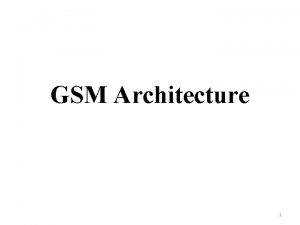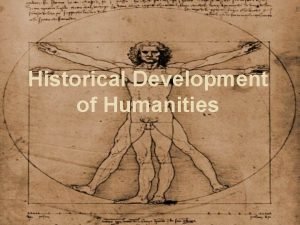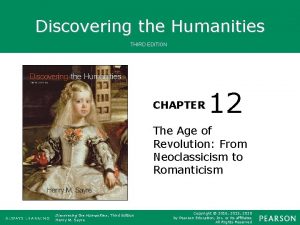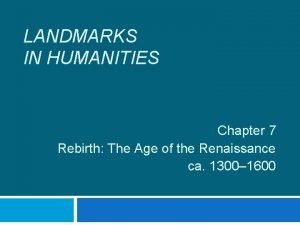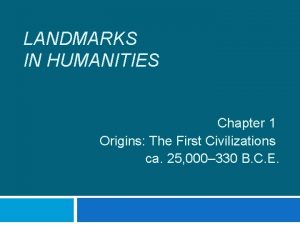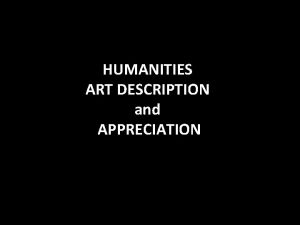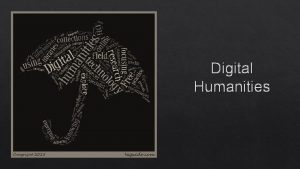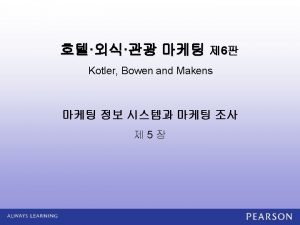Modern Humanities An Overview Modern Entertainment Modern Architecture


















- Slides: 18

Modern Humanities An Overview Modern Entertainment Modern Architecture Modern Era Art

Modern Entertainment z. Vaudeville z. Film z. Radio z. Television

Vaudeville z is a kind of theatrical entertainment that features a wide variety of acts. It was the most popular form of entertainment in the United States from the 1880's to the early 1930's. z Vaudeville developed many stars who later gained great success in other types of entertainment, especially motion pictures and radio. These stars included Jack Benny, George Burns, Eddie Cantor, W. C. Fields, Al Jolson, Ed Wynn, and Sophie Tucker. Click on picture to see the show.

Film z At first the screenings formed part of vaudeville shows and arcades, but in 1902 a Los Angeles shop that showed only moving pictures had great success; soon "movie houses" (converted shop rooms) sprang up all over the country. The first movie theater, complete with luxurious accessories and a piano, was built in Pittsburgh in 1905. A nickel was charged for admission, and theater was called the nickelodeon. z From the 1930 s until the early 1950 s, the studios sponsored a host of talented actors z In the 1950 s, two developments ended the studios' grip on the entertainment business: the overwhelming popularity of television began to eat into studio profits and the studios were forced by the federal courts to yield the control of distribution and exhibition that they had maintained by means of massive conglomerate corporations.

Radio z Perhaps the most popular form of entertainment in the 1930 s. z By 1933, two thirds of American households owned at least one radio, and families gathered together to listen to comedies like Fibber Mc. Gee and Molly and adventures like The Shadow. z People also relied on radios and for news as was demonstrated on Halloween of 1938 when Orson Wells’ fictional news bulletins from the radio play “invasion of Mars caused wide spread fear of a German invasion.

Television: A global medium Click picture of Lucy and Desi to learn more z Philo Farnsworth patents his "dissector tube" in 1927. It turns out to be an important component in the development of all-electronic television. z Development of commercial television takes a back seat to America's involvement in World War II. z The 1962 launching of Telestar I, a communications satellite TV goes global. z Television programs attempt--gingerly-to reflect the influence of the civil rights movement in its portrayal of black characters. The 1968 season features Diahann Carroll as Julia, a self-confident, accomplished nurse. While the show is praised for avoiding racial stereotypes, it takes heat for failing to accurately present the life of a black working mother.

Modern Architecture z. Prairie (Dana House and Falling Water) z. Bungalow (Tract House precursor) z. Art Deco (You might know this style from the Brownstones in NY and the Hotels on Miami Beach) z. Bahaus/ International (Pure Function) z. French Renaissance (Homes of the Rich and Famous)

Prairie Style z Mostly synonymous with Frank Lloyd Wright z Exterior Space meant to blend with surroundings z Interior Spaces not compartmentalized z Form Follows Function Philosophy Frank Lloyd Wright Home & Studio, 951 Chicago Avenue

The Craftsman Bungalow z Developed as a reaction against the machine-made ornamental excess of the Victorian era. z This was a back-to-nature movement, reflecting a desire to return to simpler times when craftsman worked with their hands and took pride in detail. z In architecture, structural detail and the use of good materials were prized over applied ornamentation. One of the most common middle-class house designs from 1910 to the 1930 s.

Art Deco z Brownstone Houses in New York are common reminders of this style z So are Miami Beach Front Hotels z Known for Exterior Accents that are somewhat ornate z Known for Interior Accents that are more fluid

Bauhaus / International z In 1919, Walter Gropius (18831969) was appointed to head a new institution called the Bauhaus*, in Germany z Created for the workers z Reject all things bourgeois, ie. frilly foo stuff z Return to the original Classical principles of Western architecture, ie. think salt box house

French Renaissance z Richard Morris Hunt (1827 -1895) was from a wealthy colonial family who moved to Paris in 1843. z He took his knowledge French Renaissance Revival back to New York in 1855. z Major Works to his credit: y 1873 –the Tribune Building in New York, an early skyscraper y Many summer homes for aristocrats such as the Vanderbilts and J. J. Astor y Administration Building to the Chicago Exposition of 1893 y One of the founders of the American Institute of Architects. (WJC) (“ 19 th Century Architecture, http: //www. bc. edu/bc_org/avp/ca s/fnart/fa 267/rmhunt. html, (10, 3, 2008).

Contents z. Abstract Expressionism z. Ash Can School z. FSA Artists / WPA Artists z. Cubism z. Pop Art

Abstract Expressionism Jackson Pollock, The Tea Cup z Abstract Expressionism does not describe any one particular style, but rather a general attitude. z What these artists did have in common were morally loaded themes, often heavyweight and tragic, on a grand scale. z ``Abstract Expressionists'' shared a similarity of outlook rather than of style-- an outlook characterized by a spirit of revolt and a belief in freedom of expression.

Ash Can School “A Stag at Sharkey’s”, George W. Bellows z “Art that focused on z Slums z grim laborers, z ragged children and contained z dark, painting techniques” --Artcyclopedia. com

FSA Artists z The images produced by the Farm Securities Administration (FSA) are among the most famous documentary photographs of the Great Depression, the Dust Bowl, and World War II on the home-front. z Gordon Parks z Dorthea Lange’s photographs displayed and documented: y farm families and migrant workers during the Depression. y changes on the American home-front during WWII. y the relocation of Japanese-Americans. z Click here to learn more about a related program called the WPA “Big Momma and Boy (Bessie and Little Richard the Morning After She Scalded Her Husband), 1967/8” , www. iub. edu/. . . / aaa/artists/parks. html , (10/3/2008) “Human Erosion in California/Migrant Mother, Nipomo, California, 1936”, http: //www. getty. edu/art/ex hibitions/lange/ (10/3/2008).

Cubism z `The art of painting original arrangements composed of elements taken from conceived rather than perceived reality. '' -- Guillaume Apollinaire, The Beginnings of Cubism z Artists chose to break down the subjects they were painting into a number of facets, showing several different aspects of one object simultaneously. Juan Gris, The Violin and Guitar

Pop Art David Hockney, A Lawn Being Sprinkled Andy Warhol, Kumiko Powers z Pop Artists thought the Abstract Expressionists overintense and also critiqued consumer culture. z Pop Art brought art back to the material realities of everyday life, to popular culture (hence ``pop''), in which ordinary people derived most of their visual pleasure from television, magazines, or comics.
 Architecture review template
Architecture review template Stylistic overview
Stylistic overview Eir in gsm architecture
Eir in gsm architecture Overview of grid architecture
Overview of grid architecture Overview of oracle architecture
Overview of oracle architecture College of humanities and social sciences
College of humanities and social sciences What is humanities?
What is humanities? Discovering the humanities 3rd edition
Discovering the humanities 3rd edition What is medical humanities
What is medical humanities Landmarks in humanities
Landmarks in humanities Landmarks in humanities
Landmarks in humanities Landmarks in humanities 5th edition chapter 1
Landmarks in humanities 5th edition chapter 1 Humanities through the arts
Humanities through the arts Humanities art appreciation
Humanities art appreciation Charles university faculty of humanities
Charles university faculty of humanities Columbus humanities arts and technology academy
Columbus humanities arts and technology academy Art and humanities endorsement
Art and humanities endorsement Humanities art appreciation
Humanities art appreciation B'faculty of humanities agh', b'poland'
B'faculty of humanities agh', b'poland'


